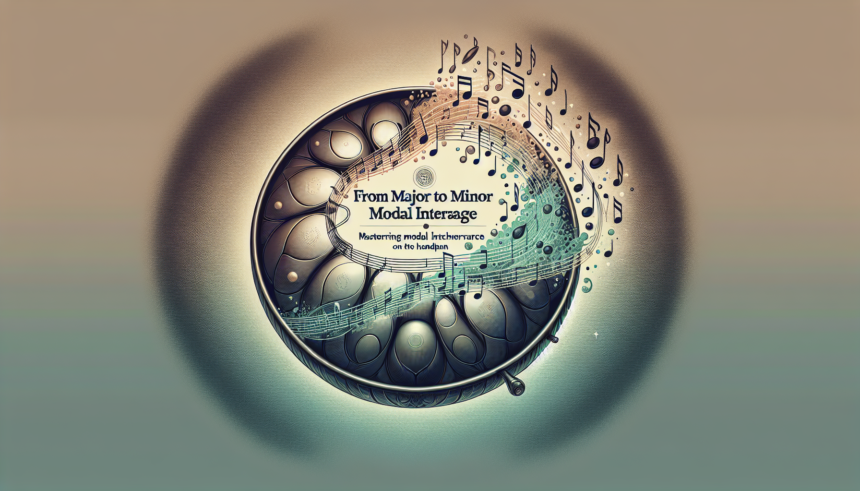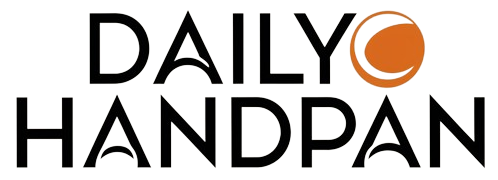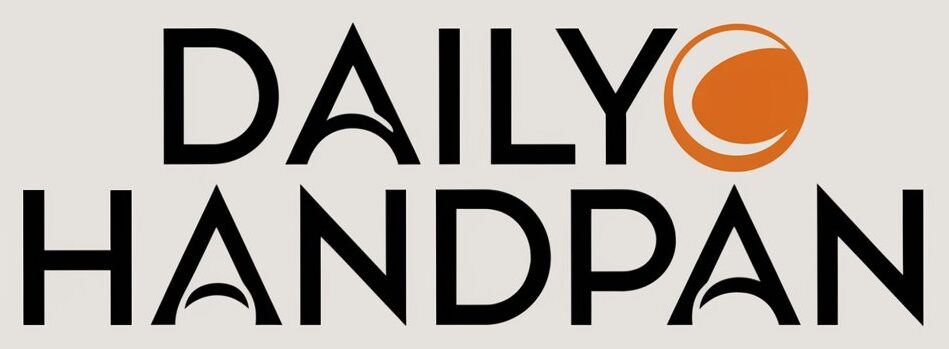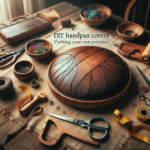<!DOCTYPE html>
<html lang="en">
<head>
<meta charset="UTF-8">
<meta name="viewport" content="width=device-width, initial-scale=1.0">
<title>From Major to Minor: Mastering Modal Interchange on the Handpan</title>
</head>
<body>
<article>
<header>
<h1>From Major to Minor: Mastering Modal Interchange on the Handpan</h1>
</header>
<section>
<h2>Introduction to the Handpan</h2>
<p>The handpan is a relatively recent addition to the world of musical instruments, having been developed in the early 21st century. Its ethereal tones and distinctive playing style have captured the attention of musicians and listeners alike. When playing the handpan, one may primarily use scales that are either major or minor, but integrating modes can introduce a broader palette of sounds to your music.</p>
</section>
<section>
<h2>Understanding Modal Interchange</h2>
<p>Modal interchange, or modal mixture, refers to the practice of borrowing chords from one mode and incorporating them into a progression in another mode. This technique is a mainstay in jazz, classical, and even modern popular music, allowing composers and performers to add complexity and emotional nuance to their compositions. Due to its vast range of pitch and dynamics, the handpan is particularly well-suited to exploring modal interchange.</p>
</section>
<section>
<h2>Basics of Music Modes</h2>
<p>Before diving into modal interchange, it is essential to understand the basic modes in Western music. The seven primary modes, which can all be derived from the diatonic major scale, are:</p>
<ul>
<li><strong>Ionian:</strong> Commonly known as the major scale.</li>
<li><strong>Dorian:</strong> A minor scale with a natural sixth.</li>
<li><strong>Phrygian:</strong> A minor scale with a flattened second.</li>
<li><strong>Lydian:</strong> A major scale with a raised fourth.</li>
<li><strong>Mixolydian:</strong> A major scale with a flattened seventh.</li>
<li><strong>Aeolian:</strong> The natural minor scale.</li>
<li><strong>Locrian:</strong> A minor scale with both a flattened second and fifth.</li>
</ul>
<p>Each of these modes has its own distinctive sound and emotional character. Modal interchange involves borrowing chords from these modes while sticking predominantly to a primary mode. For example, in a piece in Ionian (major), you might borrow a chord from Aeolian (minor) to add a darker undertone.</p>
</section>
<section>
<h2>Applying Modal Interchange on the Handpan</h2>
<h3>Step 1: Identifying Your Primary Mode</h3>
<p>Begin by identifying the mode in which your piece is centered. This will typically be Ionian or Aeolian, as these are the most common modes. For this example, let's assume you are working in Ionian, where your root note corresponds to a major scale.</p>
<h3>Step 2: Choosing Modal Borrowing Points</h3>
<p>Decide when and where you would like to introduce chords from other modes. These points can vary depending on the emotion you want to convey, the dynamics you wish to explore, and the story you aim to tell through your music.</p>
<h3>Step 3: Experimenting with Common Borrowed Chords</h3>
<p>Some popular borrowed chords and their emotional impacts include:</p>
<ul>
<li><strong>bVII:</strong> Borrowed from Mixolydian, adds a sense of relief or melancholy.</li>
<li><strong>iv:</strong> Borrowed from Aeolian, provides a gentle sad touch within a major context.</li>
<li><strong>ii°:</strong> Borrowed from Locrian, adds tension and intrigue.</li>
<li><strong>bIII:</strong> Borrowed from Aeolian, introduces a majestic, grand feel.</li>
</ul>
<h3>Step 4: Integrating Borrowed Chords Seamlessly</h3>
<p>When incorporating borrowed chords, practice transitioning fluidly between your primary mode and the borrowed chords. This can be achieved through smooth voicing and by ensuring that your rhythm remains consistent. The handpan’s layout facilitates easy shifting between notes, allowing you to blend different modes effortlessly.</p>
<h3>Step 5: Practice and Refinement</h3>
<p>Like any musical technique, mastering modal interchange requires practice. Focus on one mode at a time and experiment with different chords until you find combinations that resonate with you. Record your sessions to analyze your transitions and identify areas for improvement.</p>
</section>
<section>
<h2>Creating Emotional Landscapes</h2>
<p>One of the most significant advantages of using modal interchange on the handpan is the ability to create rich, emotional landscapes. For instance, starting in Ionian can convey happiness or enthusiasm. Transitioning through a iv chord introduces a sense of bittersweetness or longing, and resolving back to the Ionian root can evoke a satisfying conclusion.</p>
<p>Similarly, working in Aeolian can set a somber or introspective mood. Borrowing a bVII chord from Mixolydian can add a poignant or hopeful moment, giving your music a dynamic emotional range.</p>
</section>
<section>
<h2>A Practical Example</h2>
<p>To illustrate modal interchange on the handpan, consider a simple progression in the key of C Ionian:</p>
<ul>
<li>C - G - Am - F (I - V - vi - IV)</li>
</ul>
<p>Using modal interchange, you might introduce a bVII chord borrowed from Mixolydian:</p>
<ul>
<li>C - G - Bb - F (I - V - bVII - IV)</li>
</ul>
<p>This progression adds a new color and emotional depth to your music. The Bb chord introduces a moment of tension and release, creating a rich and engaging musical narrative.</p>
</section>
<section>
<h2>Conclusion</h2>
<p>Mastering modal interchange can significantly expand your musical vocabulary and expressive capabilities on the handpan. By understanding and applying this technique, you can craft compositions that resonate deeply with listeners, utilizing a vast array of emotional tones and dynamics. As with any skill, practice and experimentation are key. Take the time to explore these concepts, and soon you’ll find yourself creating nuanced, emotionally rich music on your handpan.</p>
</section>
<section>
<h2>Frequently Asked Questions (FAQs)</h2>
<div>
<h3>1. What is modal interchange?</h3>
<p>Modal interchange is the practice of borrowing chords from different musical modes and incorporating them into a piece that is primarily centered in one mode. This technique adds harmonic complexity and emotional depth to the music.</p>
</div>
<div>
<h3>2. Which modes are commonly used for modal interchange?</h3>
<p>Common modes used for modal interchange include Ionian (major), Dorian, Phrygian, Lydian, Mixolydian, Aeolian (natural minor), and Locrian. Each mode has its unique emotional character and harmonic properties.</p>
</div>
<div>
<h3>3. How do I know which chords to borrow for modal interchange?</h3>
<p>Experimenting with different chords from various modes and listening to their emotional impact is a good way to start. For example, in a major (Ionian) context, try borrowing the iv chord from Aeolian or the bVII chord from Mixolydian.</p>
</div>
<div>
<h3>4. How does modal interchange affect the emotional tone of music?</h3>
<p>Modal interchange can shift the emotional tone of a piece in various ways, adding tension, release, melancholy, grandeur, or introspection, depending on the borrowed chords and their placement within the progression.</p>
</div>
<div>
<h3>5. Can I use modal interchange in genres other than handpan music?</h3>
<p>Absolutely! Modal interchange is used in many genres, including jazz, classical, rock, and pop. The technique adds harmonic richness and emotional complexity regardless of the instrument or musical style.</p>
</div>
</section>
</article>
</body>
</html>From Major to Minor: Mastering Modal Interchange on the Handpan

Leave a comment




